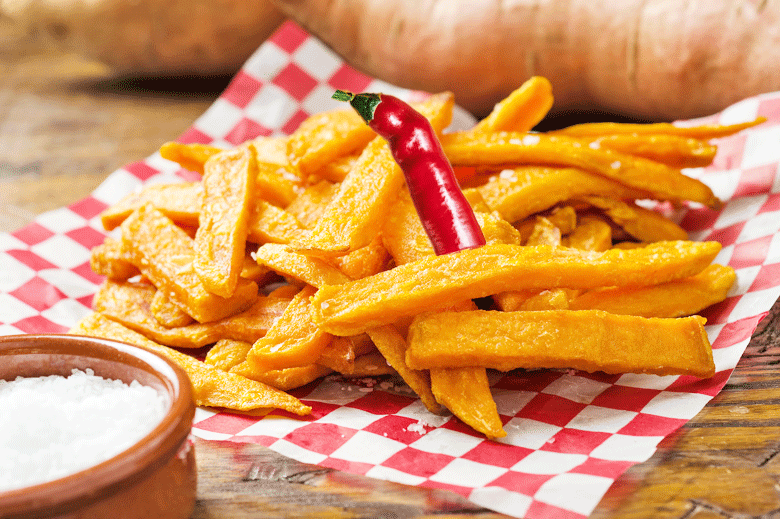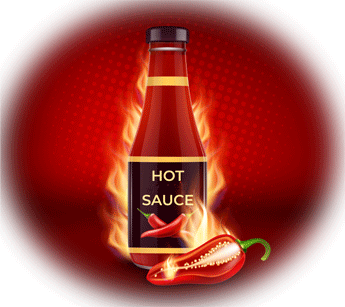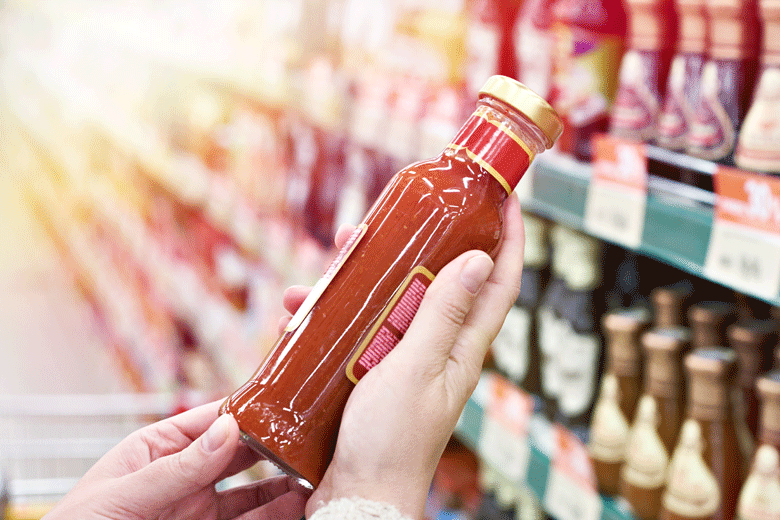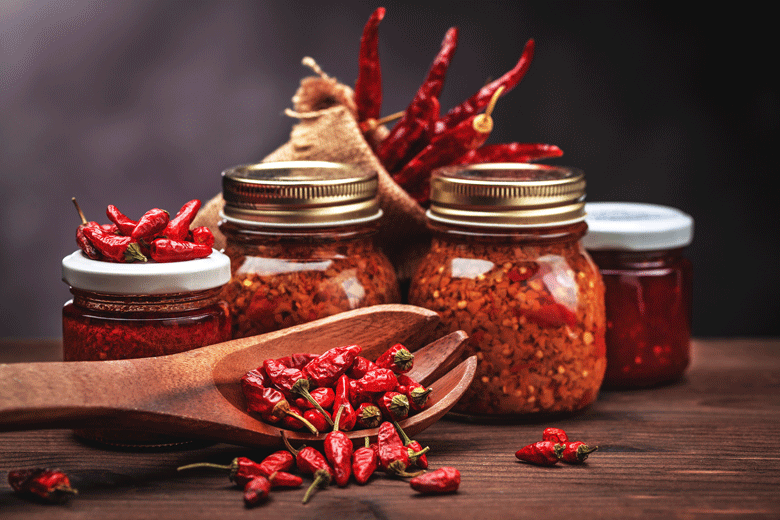A soldier’s best friend
In my previous post on this subject, I mentioned that members of the Armed Forces are great fans of hot sauces. So much so, they even take them on twenty-four-hour combat missions as a standard part of their operational ration packs.
If hot sauces are so important that soldiers take them into combat, just imagine where else they are used. Hot sauce goes on everything from the eggy, cheesy, hammy, bread on submarines to the breakfast fried eggs in an army mess hall. It is almost certainly used in the cuisine enjoyed by officers. Hot sauce is a soldier’s best friend
Where it is easy to find hot sauces back in the United Kingdom nowadays, but this was not always the case. Often when soldiers returned from overseas tours of duty, they would soon discover the hot sauces they had come to love in other parts of the world were hard to find. It wasn’t that they couldn’t get their hands on Tabasco® or Lingham’s Chilli sauce (see note). These sauces had already been in the UK for a long time, and were already national favourites. It was more a matter of trying to find the types of sauces they had enjoyed overseas. These sauces were far different to the ones back home.
It is likely the only way to get around this was to grow Chillies and make their own hot sauces. However, this solution was not that easy to achieve. Seeds for Chillies were not that easy to find, and not all soldiers were gardeners (or cooks for that matter). Sadly, this meant they had to go without their favourite sauce. It was a crazy situation, you needed hot sauce, but couldn’t buy it for love nor money.
A changing nation

The curry nation
But it wasn’t only the soldiers who struggled to find hot sauces other than Tabasco® and Lingham’s Chilli sauce. It was a segment of the population that had never ever set a foot out of the UK. I am taking here about the start of the curry nation.
Not only had the expats from the Raj returned home with a taste for curry, but it also started becoming popular among the general population. This started in the 1940s and 50s., when Anglo Indian owners of chip shops started selling curry alongside fish and chips to night-time revellers. They also started serving curry sauce with their chips. From there, curry grew exponentially.
It is not unreasonable to speculate that along with this exposure and appreciation for spicy food came an awareness of sauces made with Chillies. Whether the public would have been able to buy these sauces ready-made by a manufacturer from a local corner shop is doubtful. In the minds of the big sauce manufacturers, there simply would not have been enough demand. They were more focused on selling the more traditional Worcester sauce, brown sauce, and ketchup.
Add to the factors above the changing makeup of the British population. Immigrants from Commonwealth countries were encouraged to come and work in the United Kingdom. Known as the Windrush generation, these immigrants were invited to the United Kingdom to make up for a shortage of workers that existed at the time. Between 1948 and 1971, thousands of these immigrants arrived in the United Kingdom. TheY were mainly from the Caribbean, but also included people from India and South East Asia. These are countries where spicy foods and hot sauces with Chillies are traditionally eaten. It was a tradition that was to come with them to the UK .
The demand for hot sauces

Jamaican hot sauce
All these factors were to culminate in a demand for hot sauces that could not have been foreseen by many. While these immigrants would certainly have been made hot sauce at home and even sold them, it is likely that these homemade sauces would have been limited to a very local market.
All this demand was just waiting to be met. A company that was quick to recognise this was Grace Foods. This is a company that was started in 1922 in Jamaica that sold a West Indian hot pepper sauce called Encona. It developed a faithful following in Jamaica and other Caribbean countries. This loyalty followed the Windrush generation to the UK.
Windrush generation to the UK.
Grace recognised the demand from their former countrymen, but also probably recognised that there was a bigger demand to be filled. Not only were there expats from Jamaica who had returned home after Jamaican independence calling for the sauce, but the whole hot sauce market was crying to be exploited
With all this potential, they launched their sauces in London in 1975. They had discovered a niche and soon became successful. So much so that they are today the biggest supplier of hot sauces in the country. They have expanded their range to include sauces from eleven regions from around the world. They have certainly come a far way in the time they have been in the UK. This year Grace foods is celebrating the 100-year anniversary of its parent company
While Encona were able to capture a nice slice of the market at that time, they couldn’t and didn’t meet every need. If you are a fan of Mexican food, it doesn’t necessarily mean you will be a fan of Caribbean hot sauces. Similarly, other segments of the market would have been the same. This meant there was still a gap in demand waiting to be filled
Enter the new players

Chillies by post
This was something that some real pioneers in the UK Chilli world discovered. After being encouraged by another pioneer – Dodie Millar (see note) of Cool Chile Company, Joy and Michael Michaud set up Peppers by Post in 1994. They grew Chillies in their market garden and sent them by post to customers around the country. Some of their biggest customers were Mexican restaurants. Granted these Chillies weren’t probably used to make hot sauces – they were Poblanos – but nevertheless the point does illustrate that there was a market for Chillies and Chilli related products out there that not many even suspected existed.
For a while, Grace Foods. was allowed to supply their niche without much opposition. However, in the early nineties, other hot sauce entrepreneurs started appearing on the scene. One of the front runners in this change was a company called Hot Headz. The company recognized that there was a huge demand for Chilli sauces in the country. Before long, they were importing hot sauces from the USA. They started supplying the market and went from strength to strength. So much so that today they are one of the country’s most well-known hot sauce suppliers.
Headz. The company recognized that there was a huge demand for Chilli sauces in the country. Before long, they were importing hot sauces from the USA. They started supplying the market and went from strength to strength. So much so that today they are one of the country’s most well-known hot sauce suppliers.
When Hot- Headz started (circa 1994), British artisanal manufacturers like Chillis Galore and Chile Man began making hot sauces, and products made with Chillies in the United Kingdom. Chillis Galore produced novel offerings like Jalapeno Chilli Jelly, Jalapeno Lime & Coriander Chilli Jelly and Habanero Chilli Jelly. The Chile Man’s brands were Smokin Satan, Green Devil Salsa and Yellow Belly Piccalilli. It was the start of things to come
As early as 2001, Hot-Headz introduced sauces like Who Dares Burns! (The UK’s bestselling superhot sauce), Original Anchor Bar Buffalo Wing Sauces, Mama Africa sauces from South Africa and the Original Australian BBQ Sauce range into supermarkets like Sainsburys and Waitrose. At the time, the only sauces these supermarkets had on their shelves was Linghams, Tabasco, and Ukuva from Southern Africa.
Another entrant into the market for fresh Chillies was the South Devon Chilli Farm in 2003. The founders initially started growing Chillies as a hobby. When they found they had too many Chillies on their hands, they started selling them at farmers markets and were pleasantly surprised by the response they got . Sales were good. As good as these sales were, they still found they still had more Chillies than they knew what to do with. Thus, they donned their aprons and they started making Chilli sauces. And so, another iconical UK Chilli grower and sauce maker came into being. Nothing more needs to be said.
they still had more Chillies than they knew what to do with. Thus, they donned their aprons and they started making Chilli sauces. And so, another iconical UK Chilli grower and sauce maker came into being. Nothing more needs to be said.
Later around about 2006 they were joined in this exciting new market for Chillies by seed companies like Sea Spring seeds, (which was a follow up to Peppers by Post) and Simpsons seeds. From there growing Chillies and making hot sauces at home started becoming a popular pastime. This in turn would have created a demand for new and exciting sauces from around the world.
From these small beginnings, the market began to grow exponentially. Slowly but surely, hot sauces from various sources trickled into the country in ever increasing quantities. Sauces (among many others) like Sriracha from Thailand (first supplied into supermarkets by Hot- Headz) , Nando’s from South Africa and Crystal from the USA all started making a mark here. All of these among many others. can now be found on supermarket shelves around the country and/or online
Today, it is a recognised trend in the UK that the younger generation is far more adventurous in the types of food they eat. They are looking for bold flavours, and there is a growing movement towards trying out different styles of cuisine from other different parts of the world. Often this means eating out in restaurants, but it also means experimenting at home. The variety of hot sauces on the market from almost every corner of the globe makes this easy
And today
Hot sauces have arrived. So much so, that the big sauce manufacturers who had previously ignored hot sauces are now trying very hard to catch up. The hot sauce market is now so big in the United Kingdom that it exceeds the sales of ketchup. This is a trend that is likely to continue. So much so, that where the British market for hot sauces was estimated at £35 million in 2009, it is likely to be far higher in 2022.
Long live hot sauce
Notes
Henry Waugh and Company, a trading company, started importing Linghams sauces into the UK from Malaysia circa 1948. This was the first company to formally import the sauces into the country under a distributorship agreement. The sauces probably informally found their way into the country well before then
Dodie Miller of the Cool Chile company was the first dedicated Chilli company in the UK. Cool Chile Co. was very innovative for the time. They deserve full credit for encouraging the Chilli culture in the UK.
Tabasco® is the registered trade mark of McIlhenny Company of Avery Island in south Louisiana.
Thank you to the contributors
I would like to thank the contributions and assistance of those who helped me put these posts together.
Pamela Stacey – for proofreading, giving suggestions and encouraging me
William Jaggard – An academic and friend, without whose help these posts would not have been possible
Joy Michaud from Sea Spring seeds.
Stuart McAllister of HotHeadz
Yeoh Jin Beng of Lingham’s Chilli Sauces, Malaysia
Marketing department of Encona

